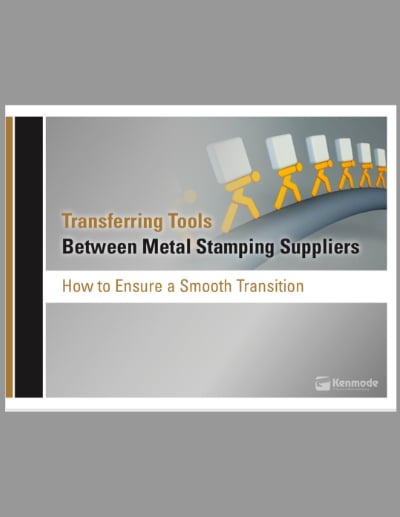From economic downturns to natural disasters to industrial accidents, the huge upheavals in the global manufacturing supply chain in recent years have brought the importance of the steady supply of parts into sharper focus, including metal stamping tools and dies.
During the depths of the recession, the automotive industry was hit particularly hard, as major manufacturers declared bankruptcy and many of their suppliers were forced out of business. As a result, OEMs are now taking another look at the staying power of their suppliers and considering such alternatives as dual sourcing as they ramp up production volumes.
The May 2012 Automotive Supplier Barometer from the Original Equipment Suppliers Association stated, “The past year’s supply chain disruptions have forced the automotive industry to look hard at supply chain risk management. Strategies that companies began pursuing last May are part of the standard operating mode now. Higher priority actions include monitoring and increasing buffer inventory stocks, considering dual material suppliers sources, investigating and validating alternate materials, and sourcing of materials and components closer to the point of use.”
When to Make a Change in Metal Stamping Suppliers
Although transferring metal stamping tools from one supplier to another can take time and effort, OEMs may have good reason to do so.
- Obtain competitive bids
- Achieve production efficiencies
- Minimize risk by diversifying suppliers
- Address quality issues
After all, consider what could happen if a supplier is unable to accommodate higher production volumes or goes out of business without warning.
Ensuring a Smooth Transition
The first step in the transfer process is for a manufacturer is to request a quote from one or more metal stamping firms for running the die and producing the parts. In order to provide an accurate estimate, the manufacturer will need to supply as much information upfront as possible, including a sample of the part, the print, production volume, quality issues, and other critical information.
The next step is to ship the existing tool and die for inspection by the metal stamper’s engineering team, who can determine whether it meets quality production standards or if it needs repair or redesign. OEMs should insist upon an in-depth evaluation, together with estimates of the costs of any necessary die repairs or the design and production of a new die. If a manufacturer wishes to avoid any disruption with suppliers, the metal stamper can create a new die from scratch, although that tends to be more expensive than a transfer. Whatever the choice, it is critical to plan in advance to ensure a successful transfer and production start-up.
Successful Tool Transfer Prevents Shutdown
At Kenmode, we instituted a Rapid Transfer Program to assist clients in all industries with critical tool transfers. A case in point was an automotive client, who called us to handle a last-minute tool transfer that could have resulted in a major delay in their manufacturing process. One of their suppliers was having financial difficulties and could not purchase the materials needed, so the client drove three of their most critical tools to us on a Monday. By Friday, our engineers had inspected the dies, transferred the tools, sourced the materials, produced the parts, performed secondary operations, and shipped the finished components – all to PPAP and quality standards. Eventually, Kenmode ended up producing 21 tools in record time, which helped the customer avoid a shutdown. Although this transfer story had a happy ending, OEMs with any concerns about current suppliers should investigate their options before a crisis occurs.


